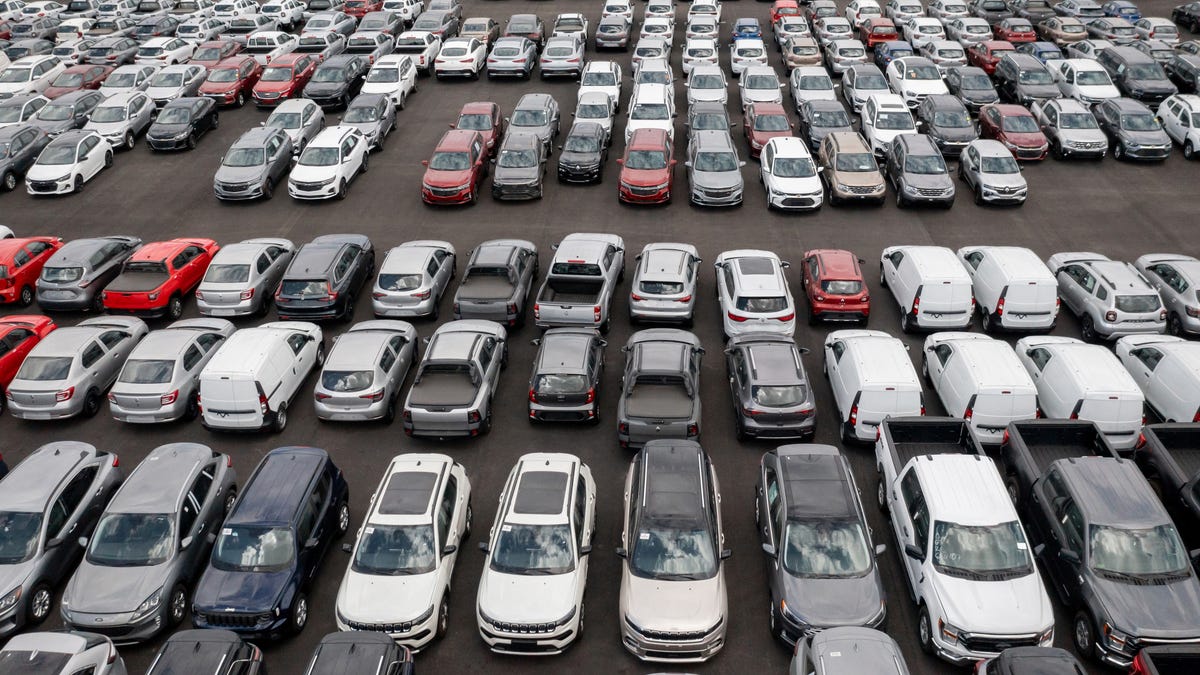The Federal Reserve issued a long-awaited interest rate cut in September, dropping rates for the first time in almost a year.
With the 0.25% rate cut, consumers may be positioned to take on large loans for purchases like a home or a car.
“A lower interest rate is great,” Jessica Caldwell, head of insights at Edmunds, an online automotive resource, told The Courier Journal. “Most people are financing their vehicles to some degree, so it really makes a big difference.”
The auto loan rate for a 73-84 months term on a new car sits as low as 6.49% APR for borrowers with “excellent” credit history as of Oct. 7, according to Navy Federal Credit Union. Meanwhile, Navy Federal Credit Union reported that same auto loan rate as low as 6.69% prior to the rate cut. The Annual Percentage Rate, or APR, is the total cost of the car loan expressed as a percentage and includes the interest rate and any fees to provide a clear picture of the total borrowing costs.
For most vehicle purchasers, the average term of a car loan is 70 months, with the average amount financed sitting at almost $43,000, Caldwell said.
More: Toyota recalls nearly 600,000 vehicles, including popular Kentucky-made car. What to know
Caldwell said an average monthly payment for a new vehicle is currently $761 and a used vehicle average monthly payment sits at $570. But rewinding to 2019, prior to the global tensions between trade, parts shortages and the COVID-19 pandemic, the average new car monthly payment was $559.
“People are just kind of almost in sticker shock,” Caldwell said of the drastic price differences on vehicles in just six years.
Shoppers can use online tools such as Edmunds Car Loan Interest Calculator to see how much “you really pay in interest on a car loan.”
For example, if you financed $40,000 for 72 months with an APR of 6.49% you would pay $8,402 in total interest. If financing $40,000 for 72 months at an APR of 6.69% you’re paying $8,674 in total interest.
And for folks who may be debating refinancing their current loan, Caldwell said even though a lower rate offers a twinge of financial reprieve, it’s still important to consider how much time is left in your current loan.
“If you do sign up for new loan, are you signing up for another five years? That’s not ideal,” Caldwell said. “It’s going to come down to what the person’s circumstances are and if they are paying a high interest rate but they’re like two years out, it may be better just to stick with it.”
More: Ford recalls more than 120,000 vehicles made in Kentucky. What you need to know
As car shoppers look for the best time to make a purchase and what the latest Fed interest rate cut means for the cost of a vehicle, The Courier Journal sat down with Caldwell to discuss what people should consider when car shopping.
Note: This interview has been lightly edited for clarity and conciseness.
Caldwell: “There’s two things that happen in car loans, on the new vehicle side, a lot of automakers offer some sort of subsidized interest rate in the form of incentives to get people to buy their car. A lot of times when the Fed drops interest rate … they’re not necessarily always reflected in the data, because [automakers are] already subsidizing these interest rates.
“On the used car side … we probably would see a little bit more of an effect on what the Fed does for used vehicles, with the exception being certified pre-owned vehicles. I think that used would see more of a reaction to what the Fed does than the new vehicle side.”
Caldwell: “Eventually everybody does. Even on the new vehicle side, when automakers find it cheaper to borrow money, they’re able to offer more generous incentives to customers. On the used vehicle side … a lot of times those, they’re strongly affected by what’s happening on the Fed side. It really benefits everybody that is borrowing money, which is the majority of Americans.”
More: Making more money? This study ranks Louisville in the top 5 nationwide in income growth
For shoppers that may be interested in an electric vehicle, especially in light of the EV tax credits disappearing, Caldwell said the leases for these vehicles could see an impact to the APR. Caldwell said most people who get an EV often lease it, with more than 70% of new EVs bought at dealerships being leased.
“It sort of is a different beast, and that’s why I think you see more people opting to lease an EV rather than buy one,” Caldwell said. “And that could change now, because now that the federal tax credit has been eliminated, we may see a different buyer behavior; but, it’s only been a few days since that’s happened, so it’s hard to say.”
Caldwell: “If you can get a lower money factor, that is going to lower your monthly payments. But if you look at the entire industry, all the new vehicles being sold, the lease rate is about 20% so it affects about one in five people. If the interest rates are lower, it’s going to make the money factor lower, which is effectively going to lower your monthly payment, which is what everybody really wants to do.”
Caldwell: “Credit score is probably super important. …That will be really important, because a lot of times, if you’re in a certain credit bracket … that can make a big difference, especially if you’re financing for 72 months. …And then I think people, they really need to take a look at what their driving habits are, because sometimes people just … want something new.
“I think the other one is that the market has been in a lot of turmoil between COVID and semiconductor shortages, and now with tariffs. I think really looking between the types of cars that you could buy (and asking) is used a better idea for me? Is new a better idea for me? Or is it certified pre-owned? Because when you take into account the total package of price, interest rate, the length of how long you’re going to own this vehicle, I think that probably is important to keep in mind.”
Contact business reporter Olivia Evans at oevans@courier-journal.com or on X, formerly known as Twitter, at @oliviamevans_.












